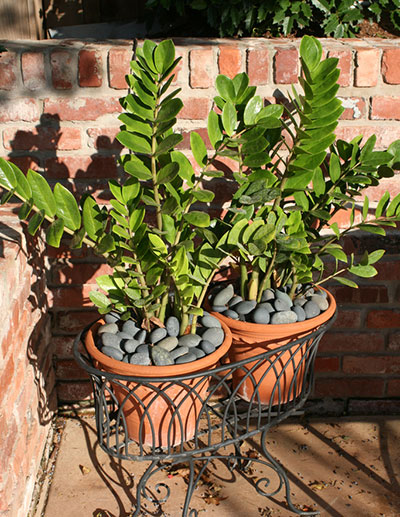ZZ Plant

The plant commonly known as “ZZ” has become a popular houseplant because of its interesting foliage and adaptability to challenging growing conditions. In fact, ZZ is so impressive that is was named a Florida Plant of the Year by FNGLA (Florida Nursery, Growers & Landscape Association) more than once.
Characteristics
The ZZ plant has a bold, tropical look with glossy, green leaflets arranged along upright stems. It looks similar to several cycads (Zamia spp.), which helps explain its Latin name (Zamioculcas zamiifolia). The common name is an abbreviation of the Latin name.
However, ZZ plant is technically an aroid and is more closely related to elephant ear, anthurium, and philodendron. Like other aroids, it has rhizomatous roots that allow it to store water. This feature helps it survive periodic drought-like conditions that it experiences in its native habitats in eastern Africa.
The plant’s growth rate will depend on how much light and water it receives. In indoor settings, it is often a slow grower but in time can reach three to four feet tall and three feet wide.
It’s important to note that all parts of the plant are toxic if ingested.
Requirements and Care
ZZ is a great houseplant for new gardeners because it will tolerate conditions that other plants will not. While it grows best in bright, indirect light, it will also tolerate extremely low light levels that would challenge other plants.
It can survive periods of drought, but will perform better with moderate watering every week or two. However, do not to let the roots sit in water or else the plant may rot.
In the warmer regions of the state, it can also be planted outdoors where it will perform as a perennial.
Another great feature of ZZ is that it can be easily propagated from leaf cuttings, making it a great passalong plant.
